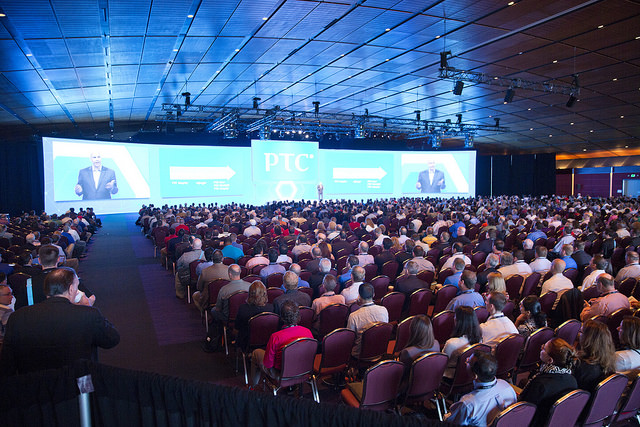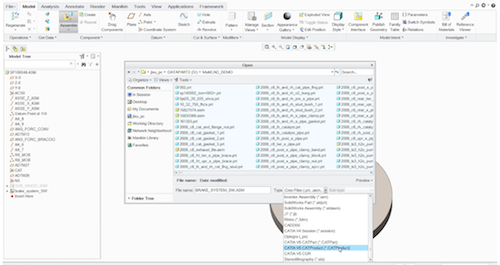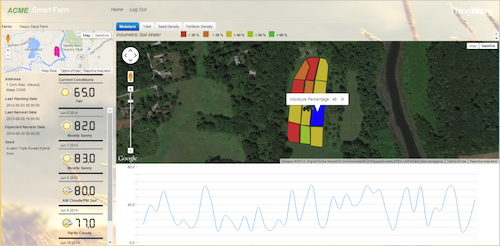
PTC welcomed more than 2,000 attendees to the annual PTC Live Global event this week.
Latest News
June 20, 2014
 PTC welcomed more than 2,000 attendees to the annual PTC Live Global event this week. Image courtesy of PTC
PTC welcomed more than 2,000 attendees to the annual PTC Live Global event this week. Image courtesy of PTCTo be fair, PTC has been moving away from its mechanical engineering roots for quite some time, expanding into Application Lifecycle Management (ALM) with the 2011 acquisition of MSK Integrity and branching out even further with the Servigistics deal, which launched it into the service lifecycle management space.
With last December’s $112 million of ThingWorx, PTC set its sights on the Internet of Things (IoT) landscape, and if this week’s PTC Live 2014 event is any indication, it is it where PTC is directing its future. Beyond the launch of Creo 3.0 (details to follow later), the event was chock full of keynotes, customer presentations, and announcements in the SLM, embedded software, and IoT space, with very little talk of traditional CAD and PLM mechanical engineering software.
Touting a new world of “smart connected products,” PTC CEO and visionary Jim Hepplemann debunked any suggestions that PTC keeps shifting strategy. “We’ve had the same strategy for decades—it just keeps refreshing itself because the world is changing,” he told an audience of media types and analysts at the event.
“Once upon a time, products were all mechanical so you could call yourself a product development company with just a CAD offering,” he said. “Today if all you have is a CAD offering and you call yourself a product development company, people are going to snicker. The fact that we keep our strategy refreshed and relevant speaks to the complexity and sophistication of products right now.”
While traditional engineering systems like CAD and PDM (and even PLM, to some degree) maintain critical information about a product during development and manufacturing, they don’t have the same visibility throughout the remainder of the lifecycle. That’s becoming problematic for companies across a range of industries as products stay in operation for a decade or longer, Hepplemann said. “What if we could stay connected to the product for the entire lifecycle so we always know what’s going on and how it’s performing—that’s the vision that’s driving PTC,” Hepplemann explained.
In PTC’s vision of a closed loop product lifecycle, Creo is used for the physical hardware design, Integrity covers the software design, systems engineering capabilities are delivered via new capabilities from its recent Atego acquisition (see below), and Windchill comes into play to manage all the configurations and to support global collaboration. PTC’s SLM suite, courtesy of Servigistics, covers the product through the distribution and service stage.
The ThingWorx technology, a platform for building IoT applications, is the linchpin in the lineup, providing the core connectivity for completing the dream of closed-loop system.
“If you think about that vision and concept, it dramatically transforms the way companies can create, operate, and service products,” Hepplemann said. “This is the most exciting time in our industry I can remember and I’ve been around for a while.”
He also voiced a call to arms, so to speak, to PTC customers to get on board with building smart, connected products. “You are the headline act,” he said. “There is no Internet of Things without your things.”
PTC Live 2014 Highlights
PTC Creo 3.0. The latest release of the 3D CAD tool introduces Unite, new technology which enhances the ability to use CAD files from a variety of systems directly in the software, addressing the data and process-related challenges of CAD consolidation. Unite lets design teams reuse existing CAD data in its current format without the need for costly upfront migrations, while converting legacy data to PTC Creo on-demand, only when modifications are necessary. PTC Creo 3.0 also delivers enhanced concept design tools, including the Align Freestyle functionality, which lets designers create and drive freeform designs parametrically, combining organic geometry creation with associative design intent.
 With Creo Parametric, users can now import and open CATIA, SolidWorks, and Siemens NX files without the need for a separate translator or access to the native authoring software. Image Courtesy of PTC
With Creo Parametric, users can now import and open CATIA, SolidWorks, and Siemens NX files without the need for a separate translator or access to the native authoring software. Image Courtesy of PTCThingWorx Platform v.5.0. The upgrade to the rapid application development platform adds flexibility for deployment via a unique federated server option so resulting IoT apps can be deployment in the cloud, on-premise, hybrid, and on-device. PTC and its ThingWorx division also joined the Industrial Internet Consortium (IIC), an open membership group charged with improving the integration between the physical and digital worlds to accelerate the adoption of IoT.
 ThingWorx Rapid Application Development Platform v5.0 offers server federation capability with options for cloud, on premise, and on-device deployments. Image Courtesy of PTC
ThingWorx Rapid Application Development Platform v5.0 offers server federation capability with options for cloud, on premise, and on-device deployments. Image Courtesy of PTCThe $50 million acquisition of Atego. PTC acquired Atego, a developer of model-based systems and engineering (MBSE) applications. Atego’s suite connects requirements engineering, architecture modeling, physical product definition, and system verification functions to help distributed teams build digital models of complex systems.
Watch this video to hear ThingWorx’s Russ Fadel talk about the platform and the IoT vision.
Subscribe to our FREE magazine, FREE email newsletters or both!
Latest News
About the Author
Beth Stackpole is a contributing editor to Digital Engineering. Send e-mail about this article to [email protected].
Follow DE





